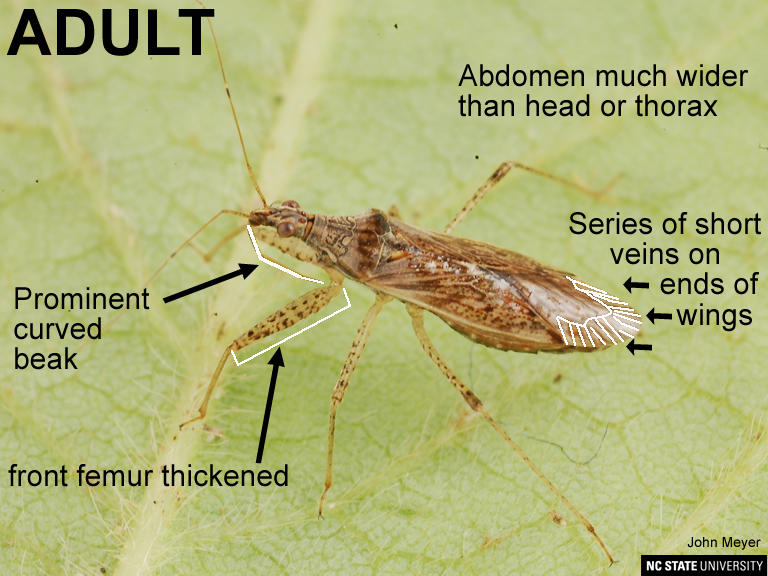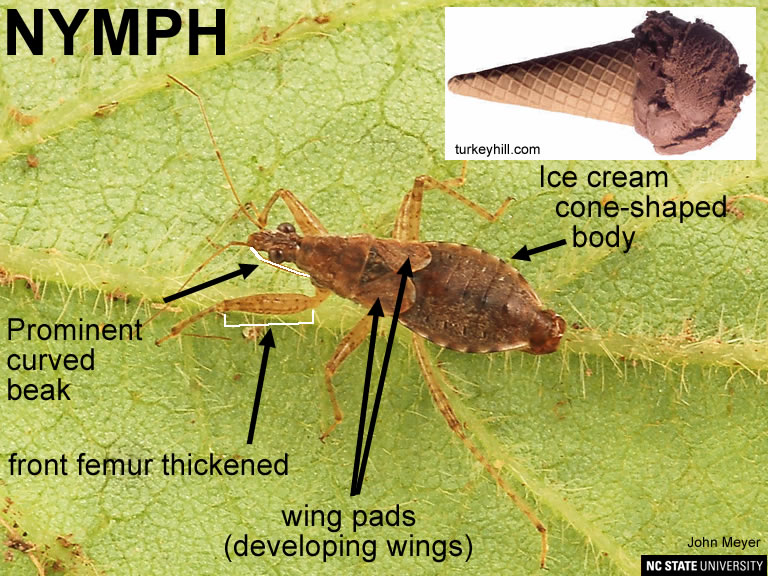Damsel Bug
go.ncsu.edu/readext?562947
en Español / em Português
El inglés es el idioma de control de esta página. En la medida en que haya algún conflicto entre la traducción al inglés y la traducción, el inglés prevalece.
Al hacer clic en el enlace de traducción se activa un servicio de traducción gratuito para convertir la página al español. Al igual que con cualquier traducción por Internet, la conversión no es sensible al contexto y puede que no traduzca el texto en su significado original. NC State Extension no garantiza la exactitud del texto traducido. Por favor, tenga en cuenta que algunas aplicaciones y/o servicios pueden no funcionar como se espera cuando se traducen.
Português
Inglês é o idioma de controle desta página. Na medida que haja algum conflito entre o texto original em Inglês e a tradução, o Inglês prevalece.
Ao clicar no link de tradução, um serviço gratuito de tradução será ativado para converter a página para o Português. Como em qualquer tradução pela internet, a conversão não é sensivel ao contexto e pode não ocorrer a tradução para o significado orginal. O serviço de Extensão da Carolina do Norte (NC State Extension) não garante a exatidão do texto traduzido. Por favor, observe que algumas funções ou serviços podem não funcionar como esperado após a tradução.
English
English is the controlling language of this page. To the extent there is any conflict between the English text and the translation, English controls.
Clicking on the translation link activates a free translation service to convert the page to Spanish. As with any Internet translation, the conversion is not context-sensitive and may not translate the text to its original meaning. NC State Extension does not guarantee the accuracy of the translated text. Please note that some applications and/or services may not function as expected when translated.
Collapse ▲-
- Common Name: Damsel Bug
- General Category: Beneficial Predator
- Taxonomic Classification: Hemiptera: Nabidae
- Scientific Name: Nabis roseipennis
Description
This is the most abundant and most commonly encountered of the damsel bugs in the southeast United States. Their delicate appearance belies their ability as predators of a variety of insects in a variety of crops. Like all true bugs (Hemiptera) these predators have a beak.

Identification
Review the images for tips on how to identify these predators.
Adults
Cone-shaped body. Many short, parallel veins at the wing tips is characteristic of all damsel bugs. The tibia of front legs is enlarged, apparently for grasping prey. A long, curved beak under a small head that has googly eyes. Somewhat drab, mottled tan, brown, and grey color. Superficially these appear to be small assassin bugs, but they are quite distinct (see a comparison).
Nymphs
No wings, but may have wing pads in older nymphs where the wings are developing. Beaks like adults. The overall shape is somewhat like an ice-cream cone. Mottled brown in color.
Value in Pest Management
These true bugs can be quite abundant in crop fields (especially soybeans) and likely contribute significantly to natural control of a variety of plant feeding insects. While there are no studies that demonstrate an ability to economically control pests, they are considered important predators of caterpillars in soybeans and may contribute to pest population regulation if abundant. They are not sold commercially.
Origin and Distribution
Native, throughout North America.
Discover Life – Nabis roseipennis


